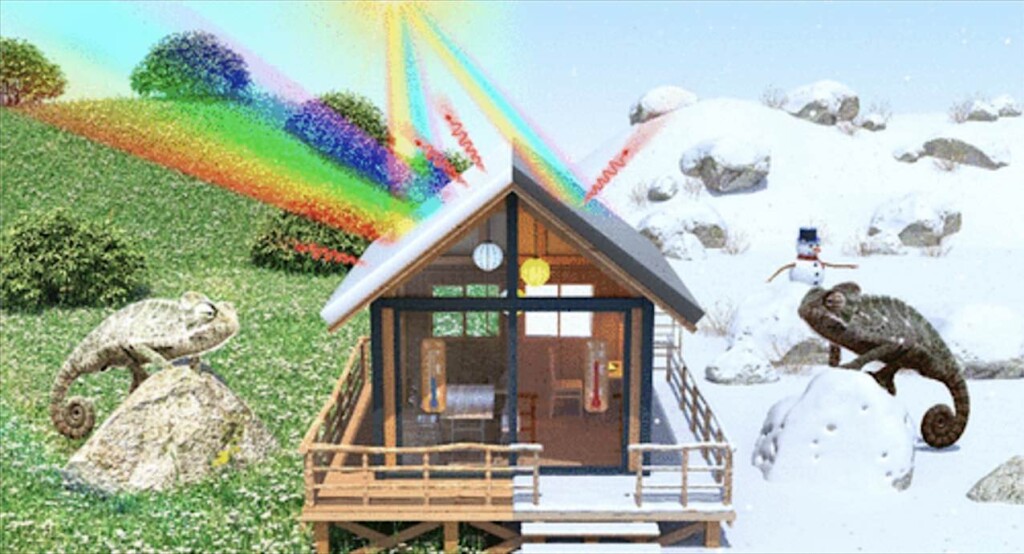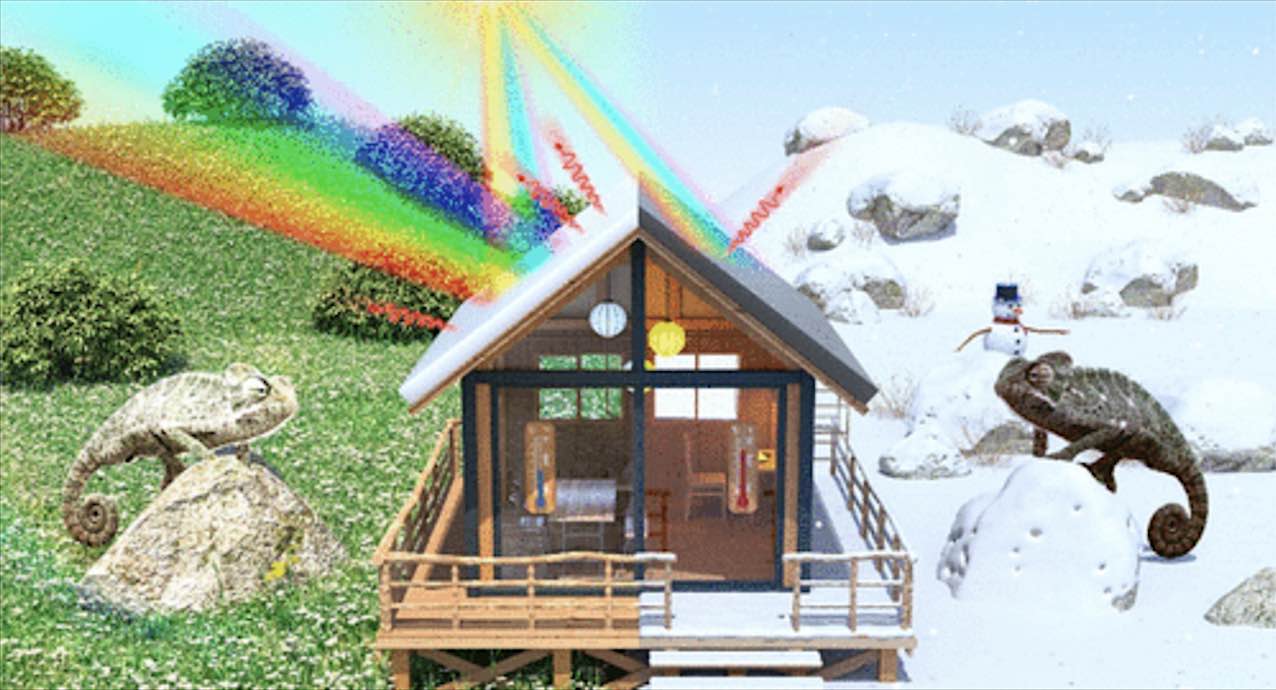
The search has intensified for alternative energy-saving technologies for heating and cooling that don’t run on fossil fuels.
Now, by mimicking a desert-dwelling chameleon, Chinese scientists have developed a cheap energy-efficient, cost-effective coating on houses.
They say the new material could keep buildings cool in the summer or warm in the winter without using additional energy.
“Many desert creatures have specialized adaptations to allow them to survive in harsh environments with large daily temperature shifts,” said Dr. Fuqiang Wang, author on the paper describing the invention and researcher at the Harbin Institute of Technology. “For example, the Namaqua chameleon of southwestern Africa alters its color to regulate its body temperature as conditions change.”
This critter in particular appears light grey in hot temperatures to reflect sunlight and keep cool, then turns a dark brown once it cools down to absorb heat instead.
This unique ability is a naturally occurring example of passive temperature control—a phenomenon that could be adapted to create more energy-efficient buildings.
But many systems, such as cooling paints or colored steel tiles, are only designed to keep buildings either cool or warm, and can’t switch between modes.
Inspired by the Namaqua chameleon, Dr. Wang and his colleagues wanted to create a color-shifting coating that adapts as outside temperatures fluctuate.
To make the coating, the team mixed thermochromic microcapsules, specialized microparticles, and binders to form a suspension layer, which they sprayed or brushed onto a metal surface.
When heated to 68 degrees Fahrenheit, the surface began to change from dark to light grey. Once it reached 86F, the light-colored film reflected up to 93% of solar radiation.


“Even when heated above 175 degrees Fahrenheit for an entire day, the material showed no signs of damage,” reported Dr. Wang.
OTHER IDEAS LIKE THIS: This Paint is So White it Reflects Heat So Humans Don’t Need as Much Cooling
The team then tested it alongside three conventional coatings—regular white paint, a passive radiative cooling paint, and blue steel tiles in outdoor tests on doghouse-sized buildings throughout all four seasons.
In winter, the new coating was slightly warmer than the passive radiative cooling system, though both maintained similar temperatures in warmer conditions.
In summer, the new coating was significantly cooler than the white paint and steel tiles, according to the findings published in the journal Nano Letters.
MORE NATURE-BASED SOLUTIONS: ‘Living Breakwater’ Makes Room for Oysters and Tidal Pools In Award Winning Design off Staten Island
“During spring and fall, the new coating was the only system that could adapt to the widely fluctuating temperature changes, switching from heating to cooling throughout the day,” Dr. Wang added.
The researchers say that the color-changing system could save a “considerable” amount of energy for regions that experience multiple seasons, while still being inexpensive and easy to manufacture.
SHARE This Nature-Inspired Solution To Save On Heating With Your Friends…





















Amazing idea and can’t wait till it comes to market.